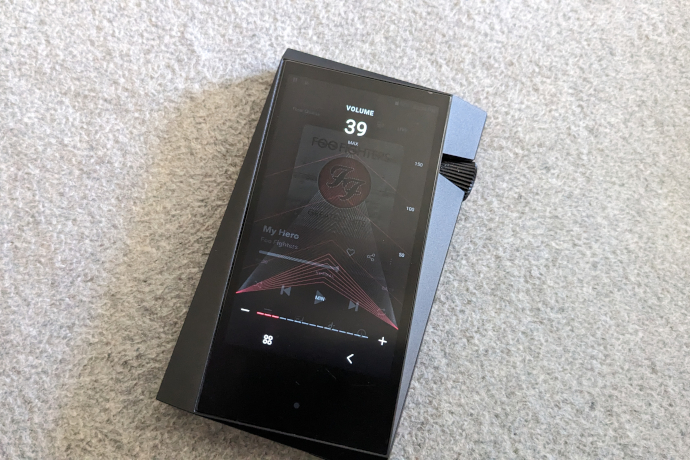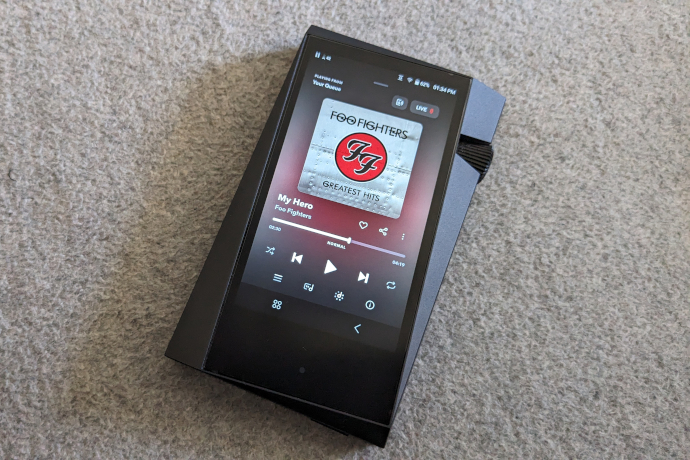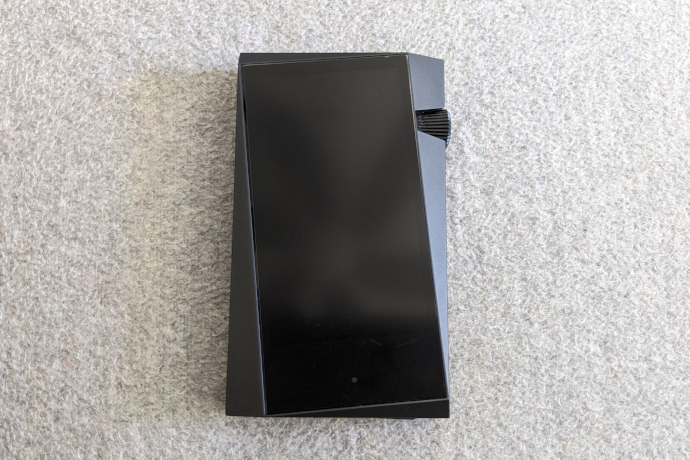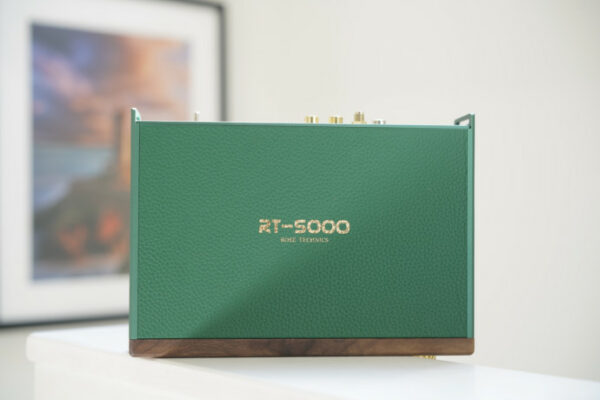Astell & Kern gave the SR35 an internal flash memory of 64 GB for your local music. You can easily add more storage to it by installing a micro SD card. When I received the SR35 I wanted to use my 400 GB card that I’ve been using in other DAPs without issues. But for some reason the AK just couldn’t handle it. It kept freezing all the time when the card was in. The files couldn’t be read properly and jumping through my music was not possible at all. I didn’t want to format the card in the AK, since it’s been working fine with all other audio players. So I decided to only fill the internal memory and use AK’s implemented streaming solutions. One thing I can tell you already, this has been a blessing in disguise.
In terms of power output AK states that the SR35 has 2.1Vrms (low gain) and 3.1Vrms (high gain) on its unbalanced (single-ended) output, while the balanced outputs show levels of 4Vrms and 6Vrms. All measured in condition no load. So take from that what you will.
The SR35 has built-in WiFi and Bluetooth (LDAC/AptX) for wireless connectivity. There are pre-loaded apps like Tidal already installed, while you can also add more apps from their selection of white listed apps. There’s no support for Google Play. So don’t get your hopes up of installing just anything you want.
You can buy the SR35 from AK’s dealers around the globe for 799 USD.
Package
The contents of the SR35’s package are listed very fast. You get the DAP, two sets of screen-protectors (front and back), a USB C cable and a quick-start guide. That’s it. No leather case or any sort of protection for the DAP itself. You can buy leather cases optionally from them. Which set you back another 70 USD. Though it’s not that much of extra costs, I think it would’ve been great if the case was included in the first place.
I know AK has never supplied cases for their entry level products in the past, but I hope they will in the future. There was also a time when they didn’t support 4.4mm outputs and look where we’re now.

Sound
Over the course of the last four months, I have used the SR35 with an extensive selection of In Ear Monitors. IEMs like the FIR Radon 6, Krypton 5, Xenon 6 or 64 Audio’s U4s, Tia Fourté Noir or Vision Ears’ Phönix.
Unfortunately I couldn’t test how well it handles full-sized headphones, but I assume that most of you out there would want to use it with IEMs anyway. If you need to know how the SR35 pairs with headphones this section isn’t going to give you much I am afraid.
The following is a description of the SR35’s sound in quad-DAC mode. We will briefly go over the changes in sound quality when switching to dual-DAC at the end of this section.
The SR35 can be described as a smooth yet engaging sounding DAP. Especially vocals have some warmth around them, that fills the body and give a rounder presentation. But in some cases that warmth has made the vocals sound too soft for me, where I was missing some bite and raw energy.
Looking at the bass section of the SR35 it sounds rounded and soft to me. Music does not deliver the same punch and force that I am used to sometimes. But that’s mostly the case for hard-rock and grunge styled music. Listening to the new Chemical Brothers album I feel the bass has good body, speed and energy.
Overall the SR35 has a well defined bass, that has a bigger and fuller body, but it doesn’t overshadow anything. The texture is more on the softer side, while the SR35 is doing a great job at layering.
The mids are again warmer sounding and of smoother character. Instruments appear again with a full body, while the mids don’t sound too dense, they are far from being lose either.
The SR35 builds a stage that has good values of width and depth, but at the same time doesn’t really give me an out-of-head experience. The stage is narrow and closed with two-dimensional proportions.
Layering is nice on the SR35, as is resolution. When it comes to imaging and separation I feel that there’s room for improvement, as even in the narrow stage, the instruments and musicians sound close to each other where it’s hard at times to distinguish their respective places in the scene.
Just like bass and mids the highs are softer and not exactly aggressive. Treble is definitely not harsh or overly bright, the contrary is the case here.

Dual DAC Mode
By switching from quad-DAC to dual-DAC there was a noticeable step down in technicalities. The sound stage became narrower, where especially the width saw changes. Resolution and separation became lower and overall the sound appeared smaller, less grand.
I sticked with the quad-DAC setting almost exclusively, and would only recommend switching if you need the extra power-saving and lesser power consumption. Otherwise the quad-DAC setting just delivers a superior sound quality. Which probably is the main focus anyway.
How does the SR35 compare to the PAW 6000? Find out on page three!








JL
Hi,
Just want to ask your opinion.
Between these 3, which one should I get?
Sony wm1am2, ak sr35 or lotoo paw 6000?